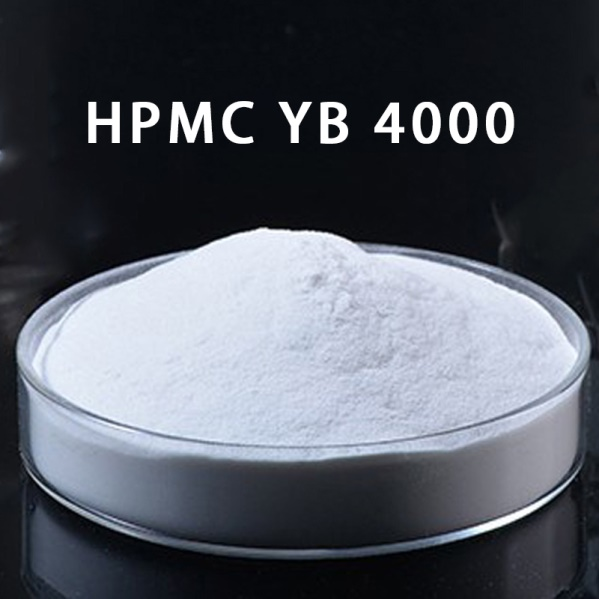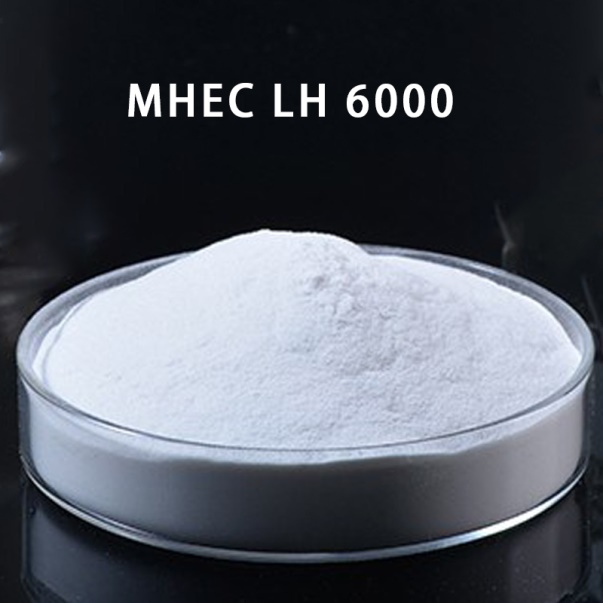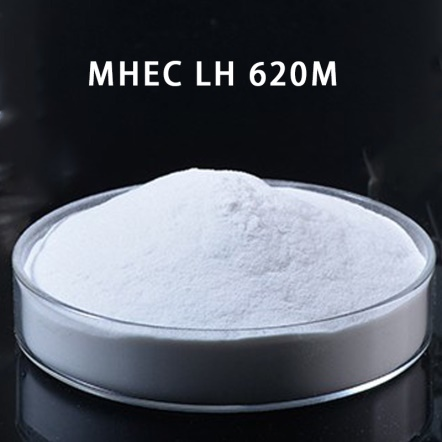-

HPMC E 50
EipponCellHPMC E 50 Hydroxypropyl methylcellulose is a prominent type of dispersant used in the polyvinyl chloride (PVC) industry. It is utilized during the suspension polymerization of vinyl chloride to effectively reduce the interfacial tension between vinyl chloride monomer (VCM) and water. This reduction in tension helps to uniformly and stably disperse the VCM within the water medium. Additionally, it aids in preventing the merging of VCM droplets at the onset of the polymerization process and inhibits coalescence between polymer particles in the intermediate and later stages. In the suspension polymerization system, EipponCellHPMC E 50 Hydroxypropyl methylcellulose serves a dual purpose of dispersion and stability protection.
Where to buy Cas HPMC E 50
-

HPMC F 50
EipponCellHPMC F 50, a hydroxypropyl methyl cellulose, functions as a dispersant in the PVC industry. In the suspension polymerization process of vinyl chloride, commonly used dispersants include polymer compounds such as polyvinyl alcohol and cellulose ether. When subjected to stirring, they facilitate the formation of droplets with suitable sizes. This capability is referred to as the dispersing ability of the dispersant. Additionally, the dispersant is adsorbed onto the surface of the vinyl chloride monomer droplets, forming a protective layer that prevents droplet aggregation and stabilizes them. This effect is known as the colloid retention ability of the dispersant.
-

HPMC YB 4000
EipponCellHPMC E4000 is a hydroxypropyl methyl cellulose ether specifically designed for use in ceramics. Hydroxypropyl methylcellulose (HPMC) is a non-ionic cellulose ether derived from natural polymer material cellulose through a series of etherification processes. It is a white powder that is odorless, tasteless, and non-toxic. When added to cold water, it forms a clear or slightly cloudy colloidal solution. HPMC possesses several properties such as thickening, dispersing, emulsifying, film-forming, suspending, adsorbing, surface activity, moisture retention, and colloid protection. It finds extensive applications in various industries, including building materials, coating industry, synthetic resin, ceramic industry, textiles, agriculture, daily chemicals, and more.
Where to buy Cas HPMC YB 4000
-

HPMC YB 810M
EipponCell HPMC 810M is a ceramic-grade Hydroxypropyl Methylcellulose (HPMC), also known as Hypromellose and Cellulose Hydroxypropyl Methyl Ether. It is derived from highly pure cotton cellulose and undergoes a specific etherification process under alkaline conditions. HPMC exhibits thermal gelation properties. When its aqueous solution is heated, it forms a gel and precipitates, which can then be redissolved upon cooling. The gelation temperature varies depending on the specific product specifications. Solubility is influenced by viscosity, with lower viscosity resulting in greater solubility. The dissolution of HPMC in water is not affected by the pH value.
HPMC possesses several notable properties, including thickening ability, salt discharge, pH stability, water retention, dimensional stability, excellent film-forming capability, wide range of enzyme resistance, dispersibility, and cohesiveness. Each HPMC specification may exhibit slight variations in these properties.
Where to buy Cas HPMC YB 810 M
-

HEMC LH 4000
The provided statement describes the hydroxyethoxyl content of commonly available commercial HEMC products in the market. These products have a range of methoxyl content from 6% to 16%, and a range of hydroxyethoxyl content from 18% to 27%. Extensive analysis has determined that the optimal performance of the product is achieved when the hydroxyethoxyl and methoxyl groups fall within the specified range.
Where to buy Cas HEMC LH 4000
-

MHEC LH 640M
The type, quantity, and distribution of substituent groups on the cellulose main chain play a crucial role in determining the properties of ethers. The hydroxyl group present on the cellulose ether molecular chain forms intermolecular oxygen bonds, which have several beneficial effects. Firstly, they enhance the uniformity and completeness of cement hydration. Secondly, they increase the consistency of mortar, thereby influencing its rheology and compressibility. Additionally, cellulose ethers improve the crack resistance of mortar by providing enhanced structural integrity. Furthermore, these ethers have the ability to entrain air, thereby improving the workability of mortar. Cellulose ethers possess a range of excellent properties, including thickening, emulsification, suspension, film formation, protective colloid formation, moisture retention, and adhesion. These properties make cellulose ethers indispensable additives in dry-mixed mortar formulations.
Where to buy Cas MHEC LH 640M
-

MHEC LH 6000
EipponCell MHEC LH 6000M is a methyl hydroxyethyl cellulose that undergoes alkalization with sodium hydroxide solution. It is then mixed with a specific amount of isopropyl alcohol and toluene solvent. The etherification agent employed in the process includes methyl chloride and oxirane. The resulting derivative products of cellulose etherification modification exhibit exceptional performance and have a wide range of applications, delivering excellent outcomes. These modified cellulose derivatives cater significantly to the requirements of national economic and social development. Moving forward, as technology continues to advance and commercialization progresses, if the synthesis raw materials and methods of cellulose derivatives can be further industrialized, they will be utilized to their fullest potential, realizing even broader applications and enhanced value.
Where to buy Cas MHEC LH 6000
-

MHEC LH 610M
EipponCell MHEC LH 610M, a methyl hydroxyethyl cellulose, is commonly utilized in various industries including papermaking, ceramics, textile printing and dyeing, and polymerization reactions. Different cross-linking agents can be employed for cross-linking modification based on the desired material properties in each field, ensuring compliance with specific application requirements. Broadly speaking, cross-linked modified cellulose ethers can be categorized into two types: etherified cross-linked cellulose ethers and esterified cross-linked cellulose ethers. Etherified cross-linking agents, such as aldehydes and epoxides, react with the -OH groups present in cellulose ether to form ether oxygen bonds (-O-). On the other hand, esterified cross-linking agents, including carboxylic acids, phosphides, and boric acid, react with the -OH groups on cellulose ether to form ester bonds.
Where to buy Cas MHEC LH 610M
-

MHEC LH 615M
EipponCell MHEC LH 615M methyl hydroxyethyl cellulose is a versatile compound that can serve as a water retention agent, thickener, binder, dispersant, stabilizer, suspending agent, emulsifier, and film-forming aid, among other functions. This is because cellulose ether, such as EipponCell MHEC LH 615M, exhibits excellent water retention and thickening properties when added to mortar. As a result, it significantly enhances the workability of the mortar. Cellulose ether is widely used as a water-soluble polymer in mortar due to these beneficial effects.
In mortar applications, cementitious materials like cement and gypsum require hydration with water to set properly. By incorporating an appropriate amount of cellulose ether, the moisture within the mortar can be retained for an extended period. This extended moisture retention enables the continuous progress of the setting and hardening process.
Where to buy Cas MHEC LH 615M
-

MHEC LH 620M
KingmaxCell® MHEC LH 620M, a non-ionic cellulose ether, is utilized in construction projects due to its beneficial properties of dispersion, water retention, bonding, and thickening. The incorporation of cellulose ether can notably enhance the water retention of gypsum. However, as the content of cellulose ether increases, there is a slight decrease in the flexural and compressive strengths of the hardened gypsum body. This reduction can be attributed to the air-entraining effect of cellulose ether, leading to the introduction of bubbles during slurry stirring, subsequently diminishing the mechanical properties of the hardened body. Simultaneously, an excess of cellulose ether can result in excessive viscosity of the gypsum mixture, leading to decreased workability.
Where to buy Cas MHEC LH 620M

